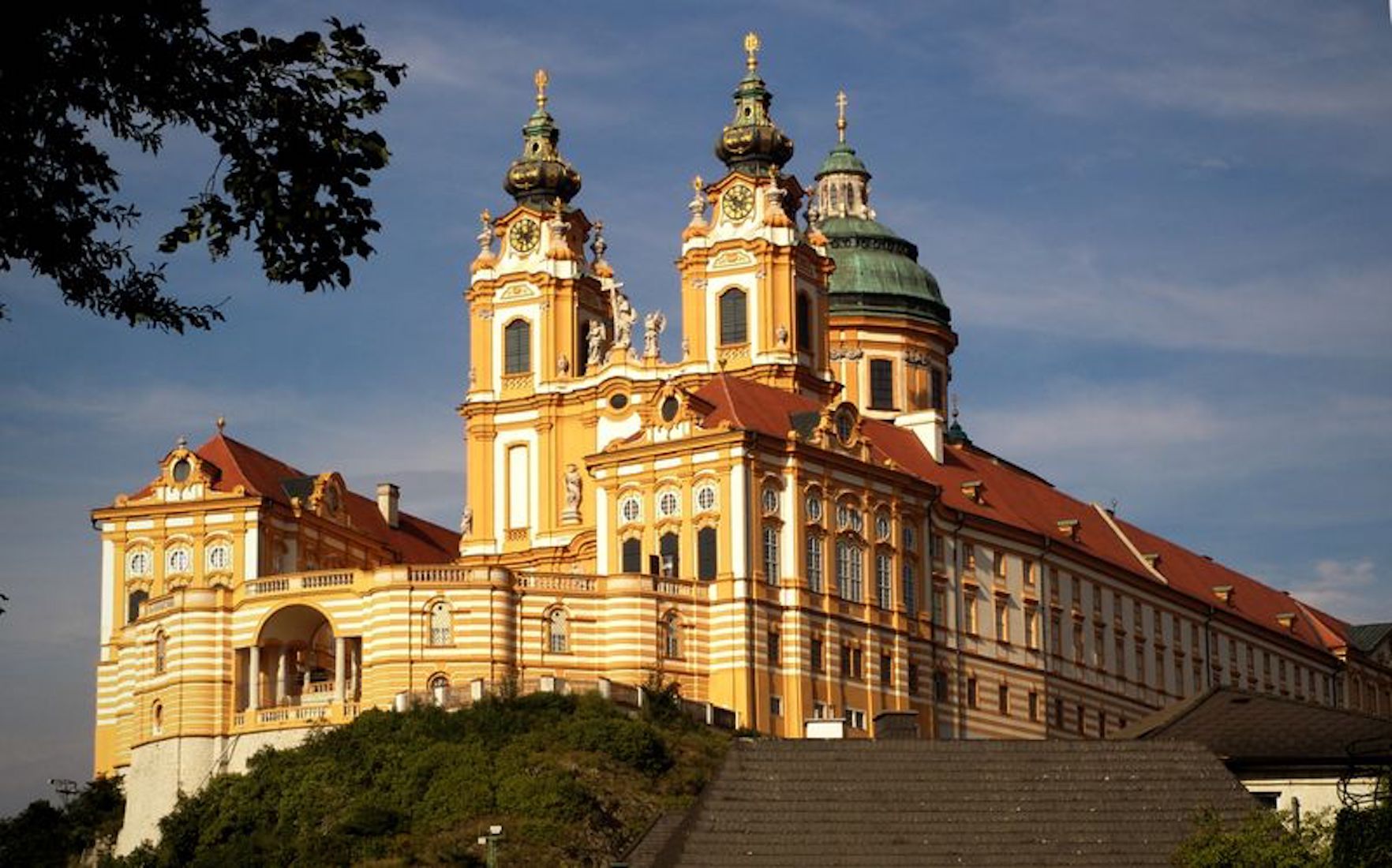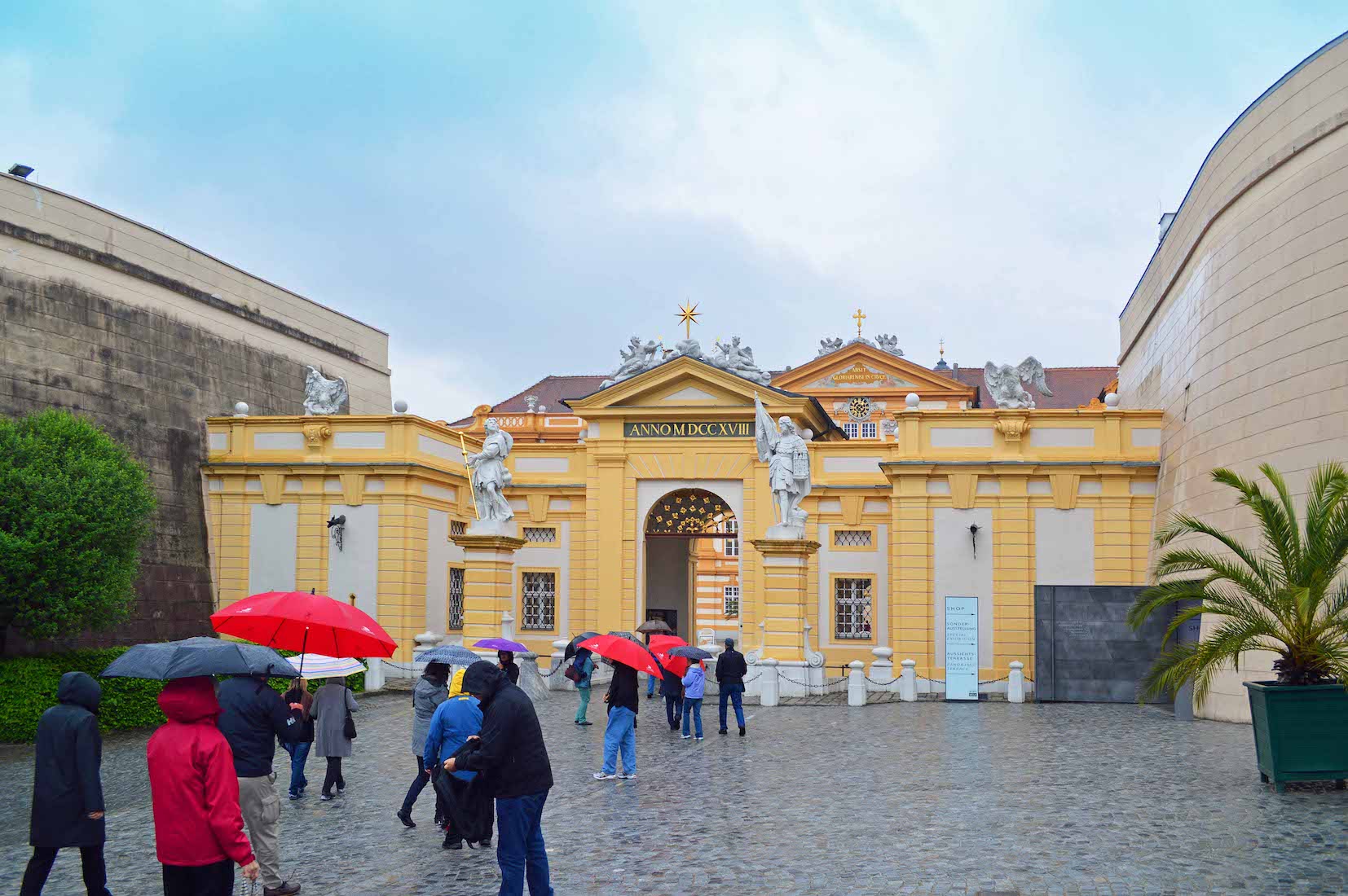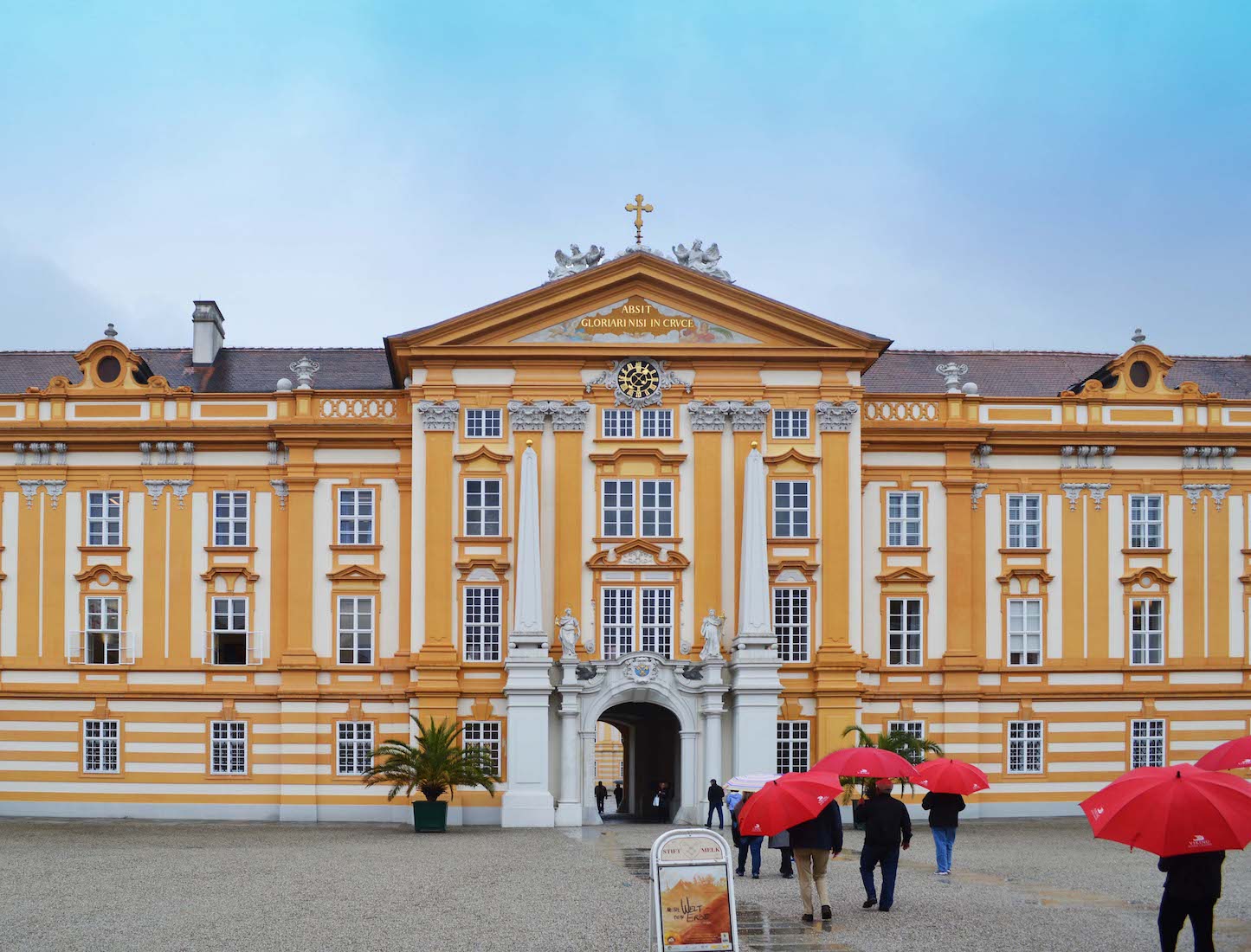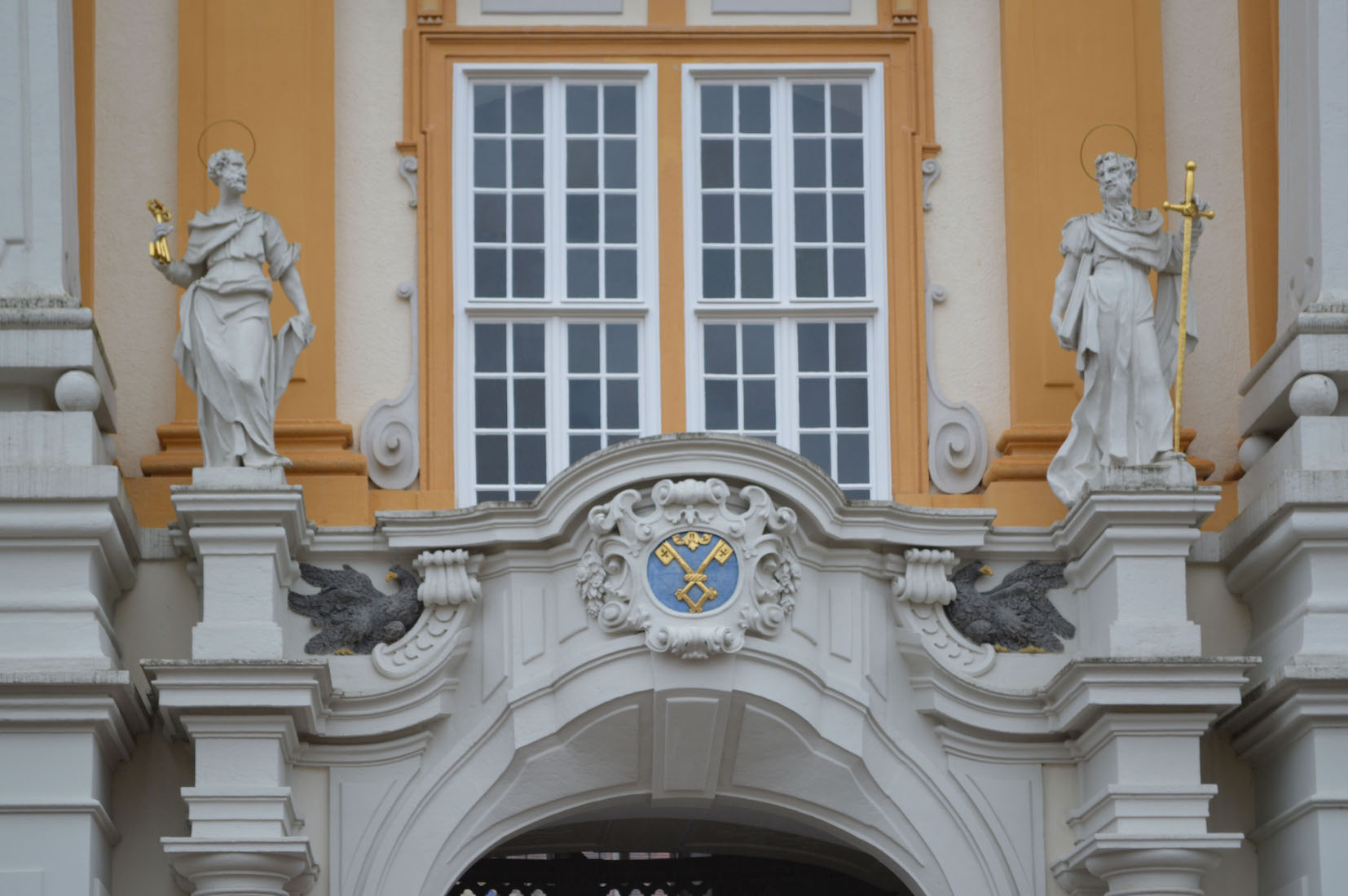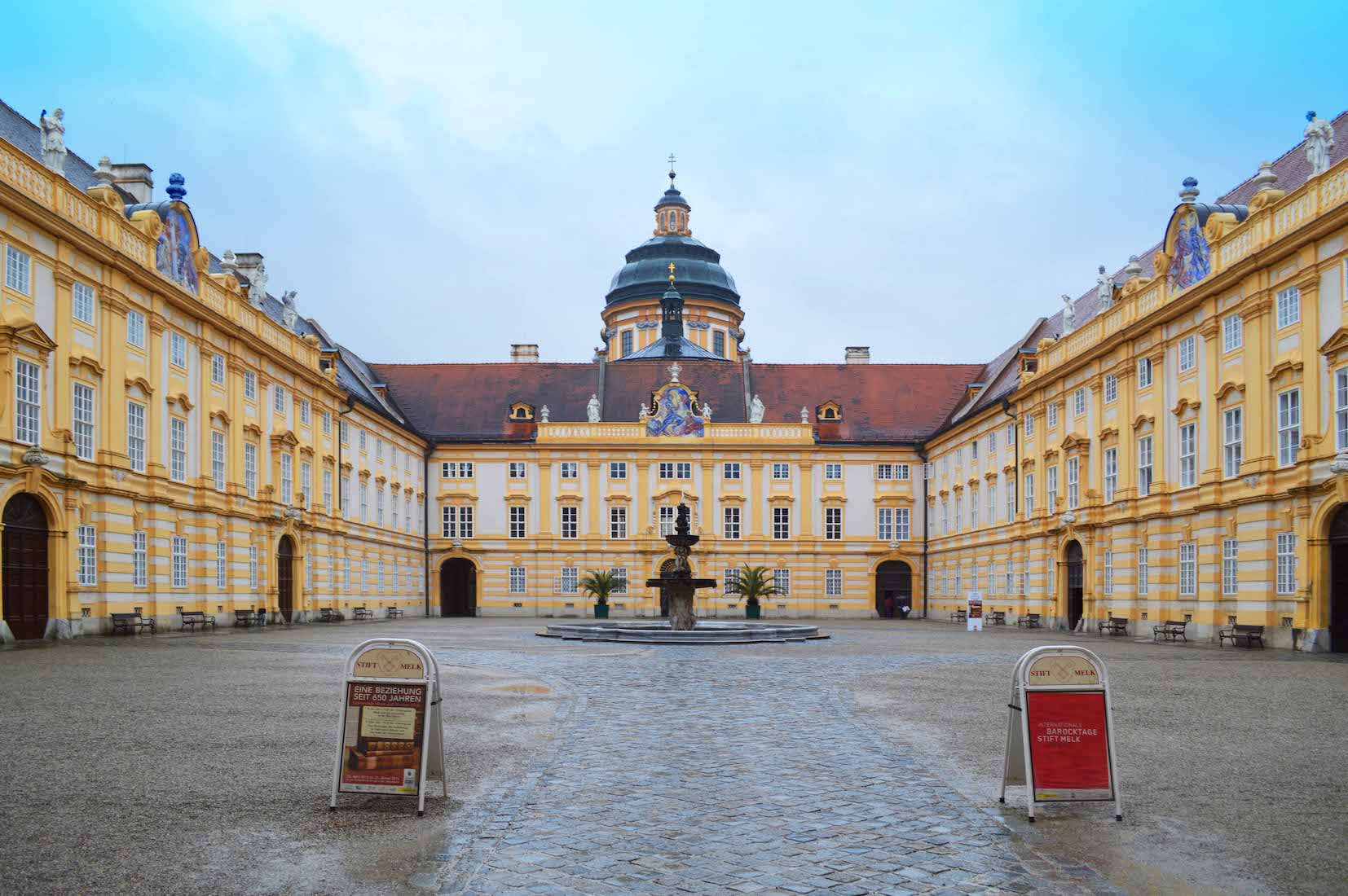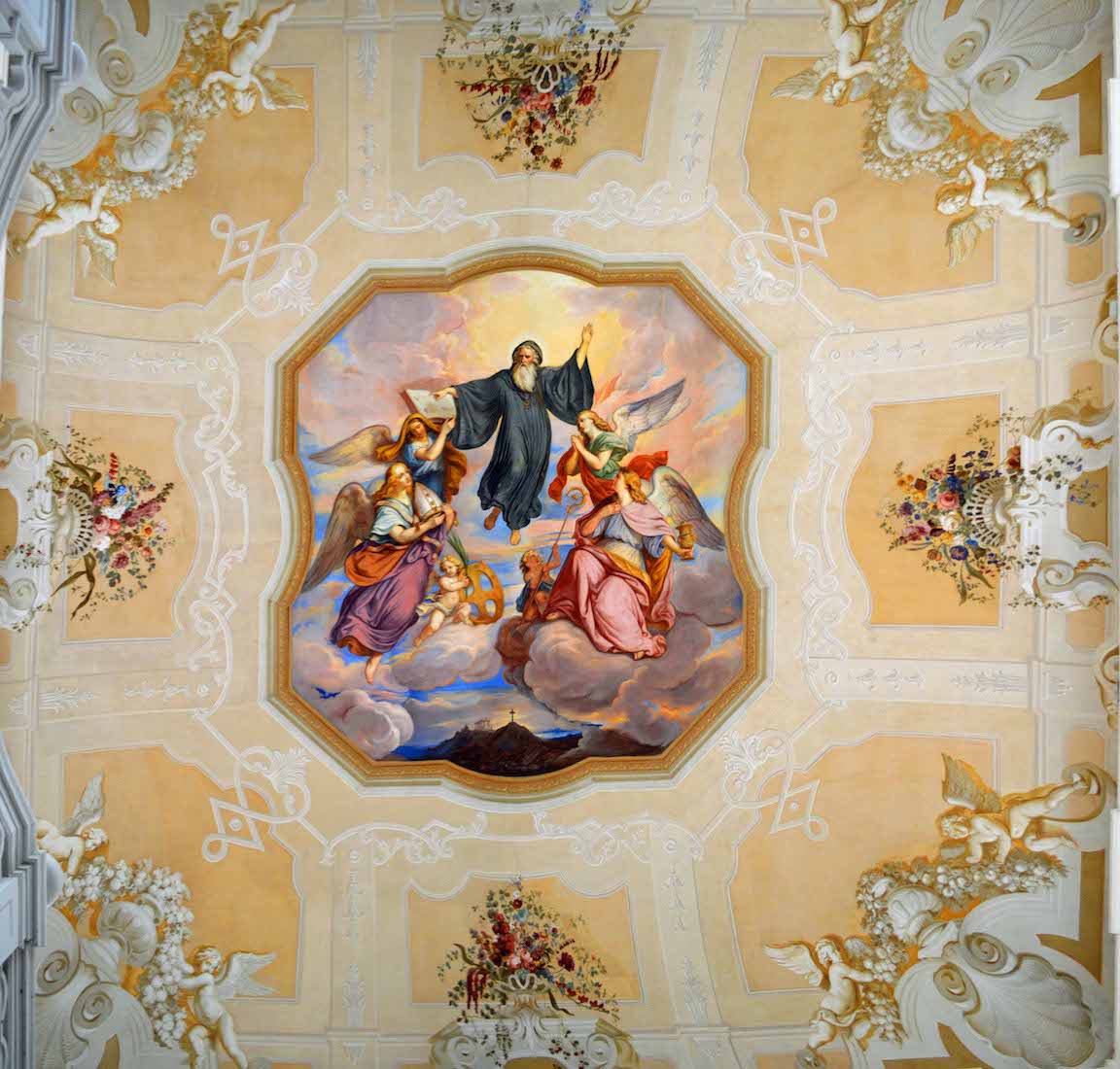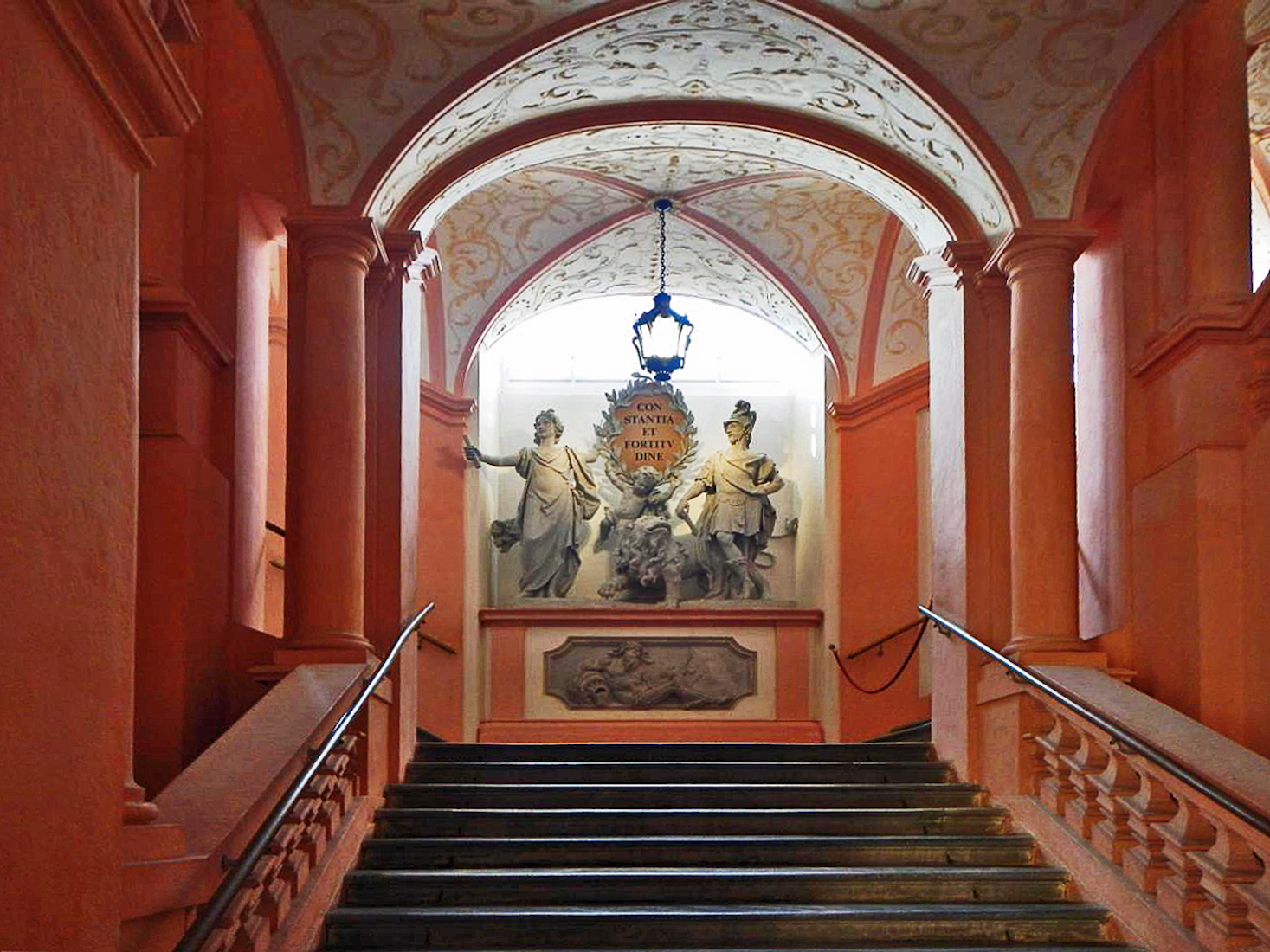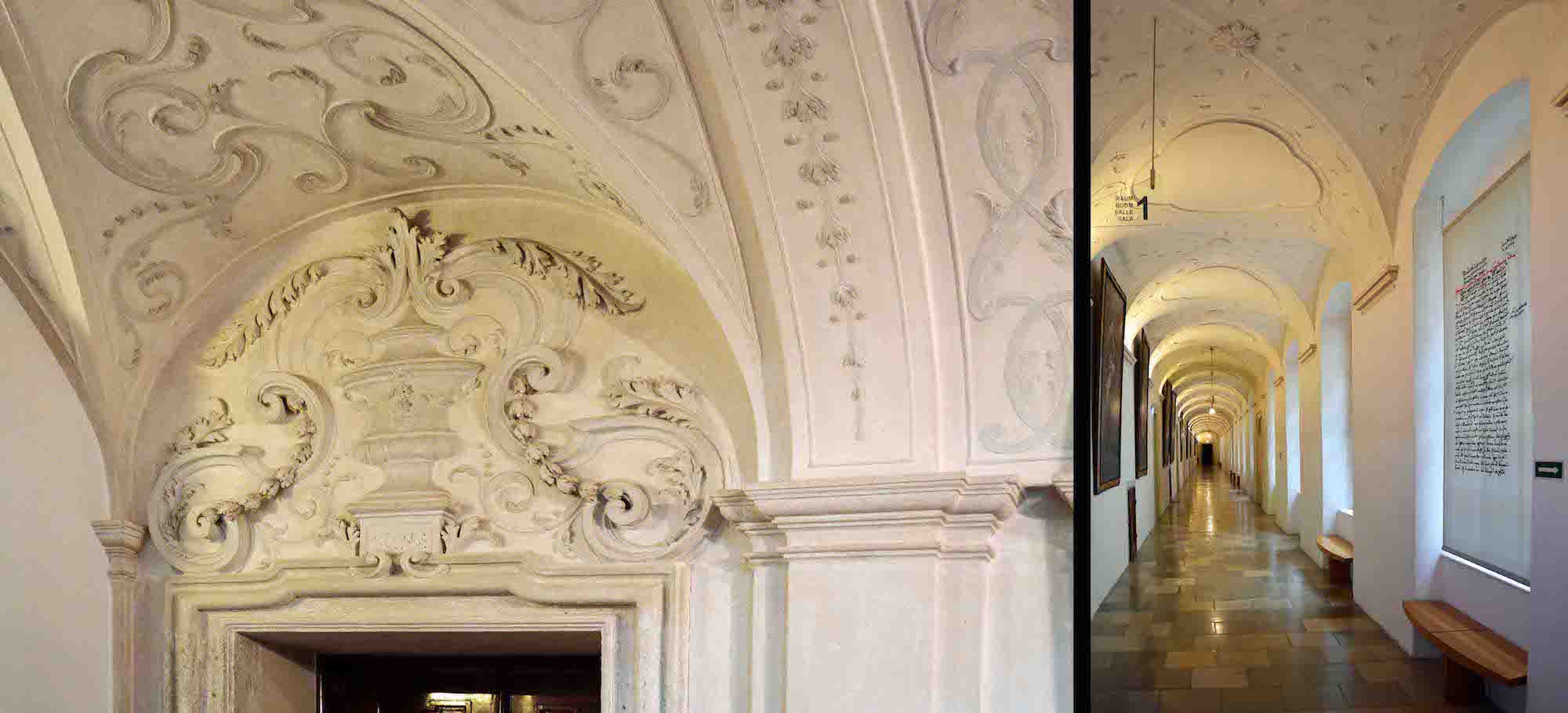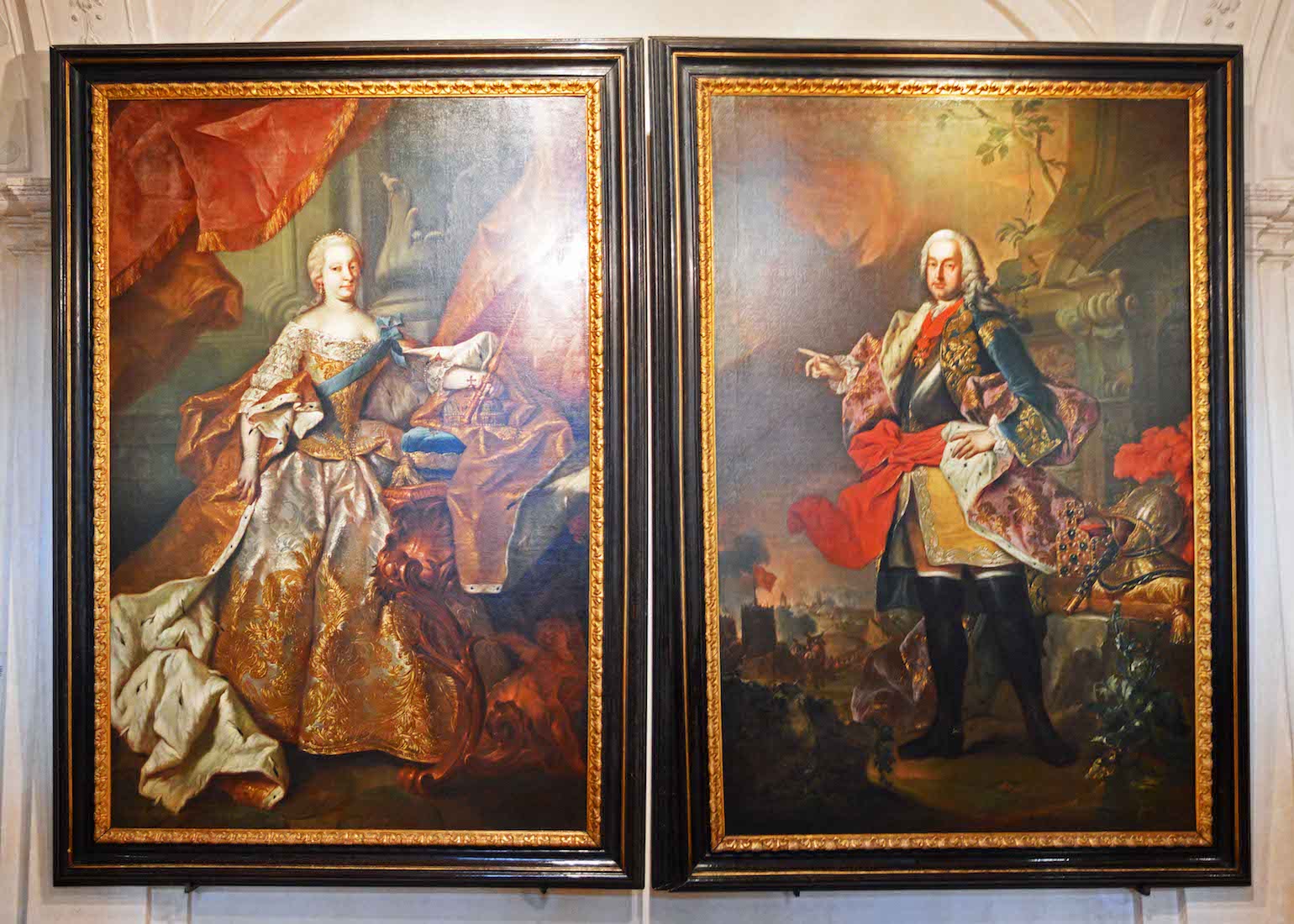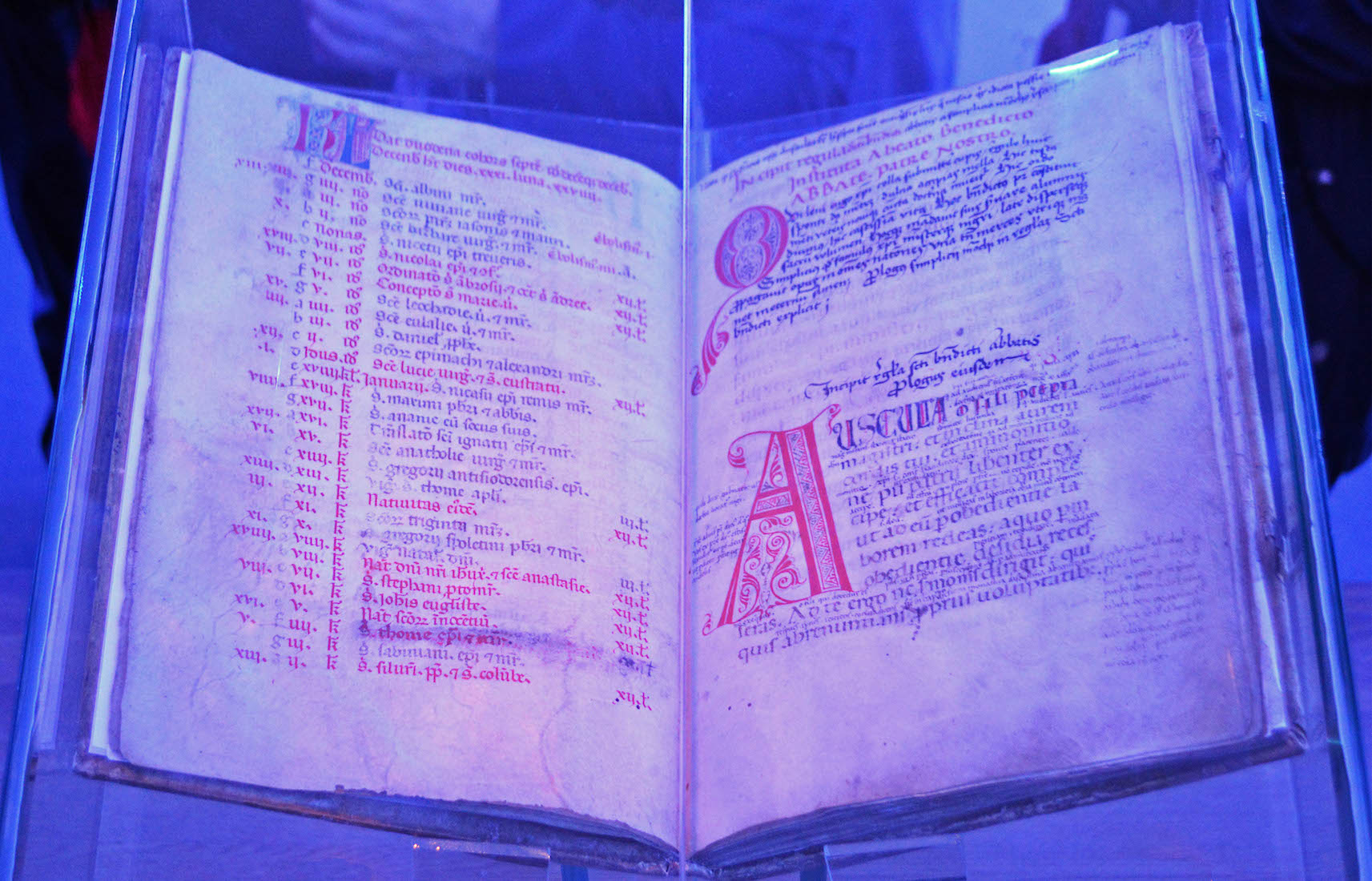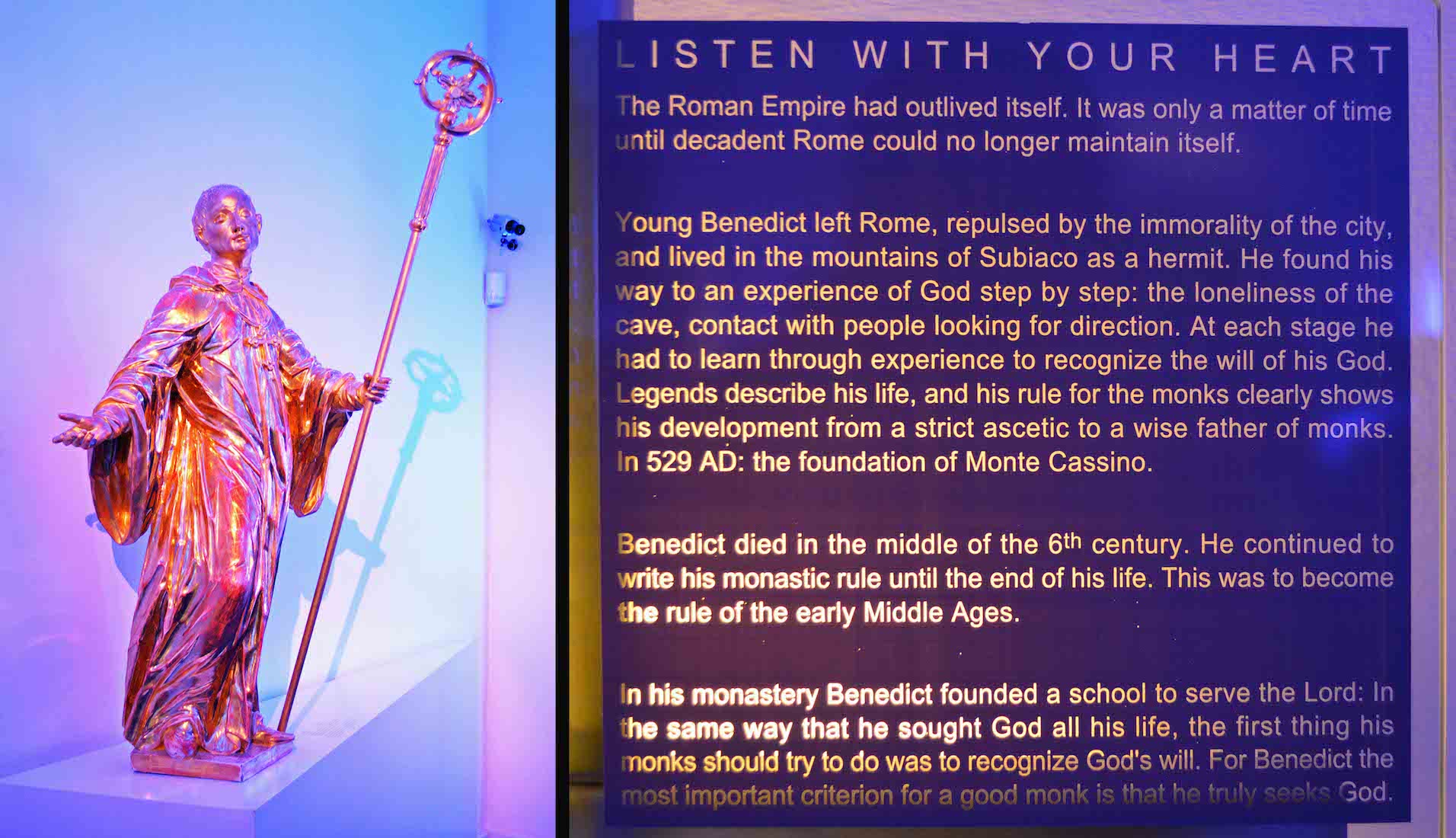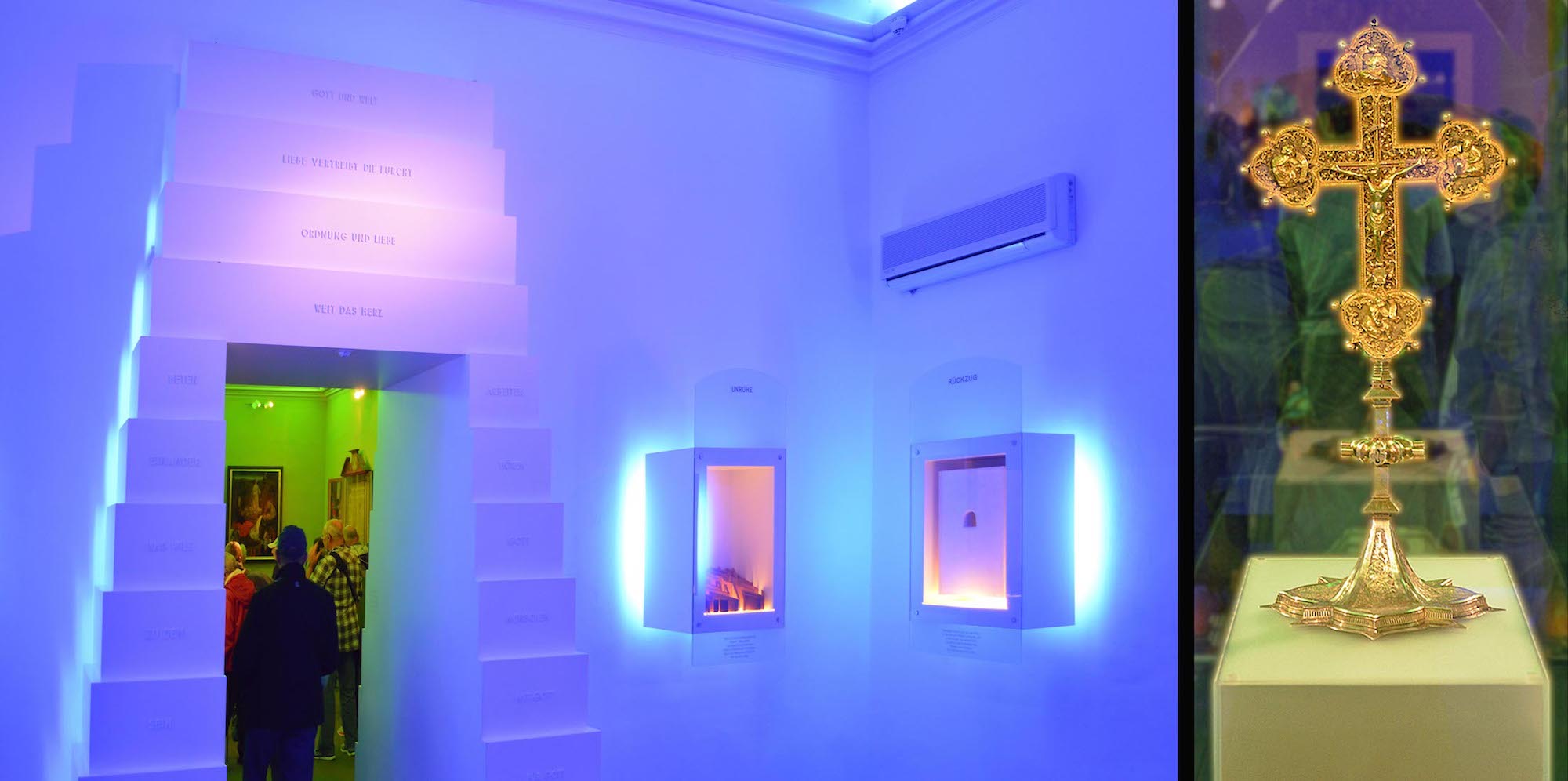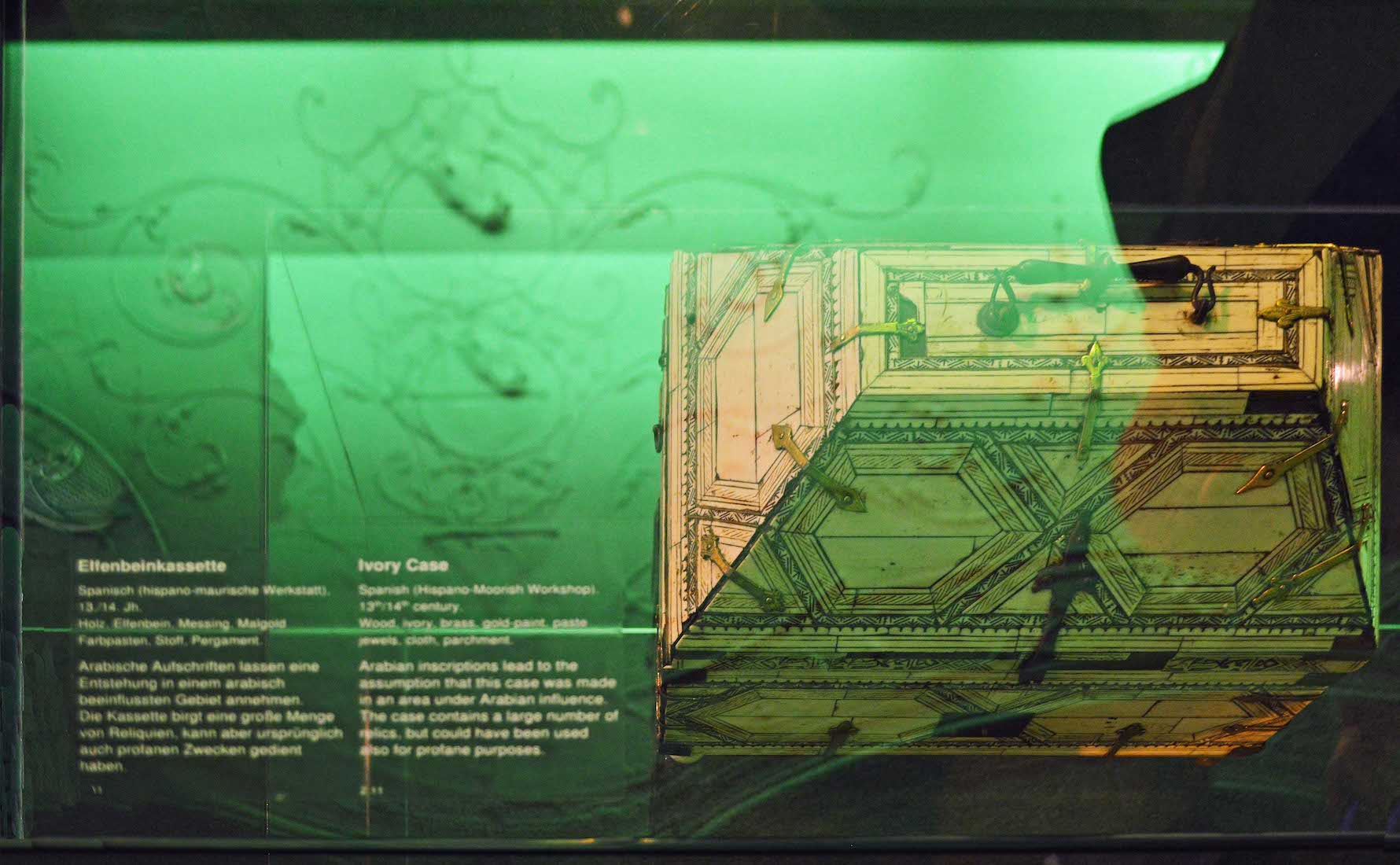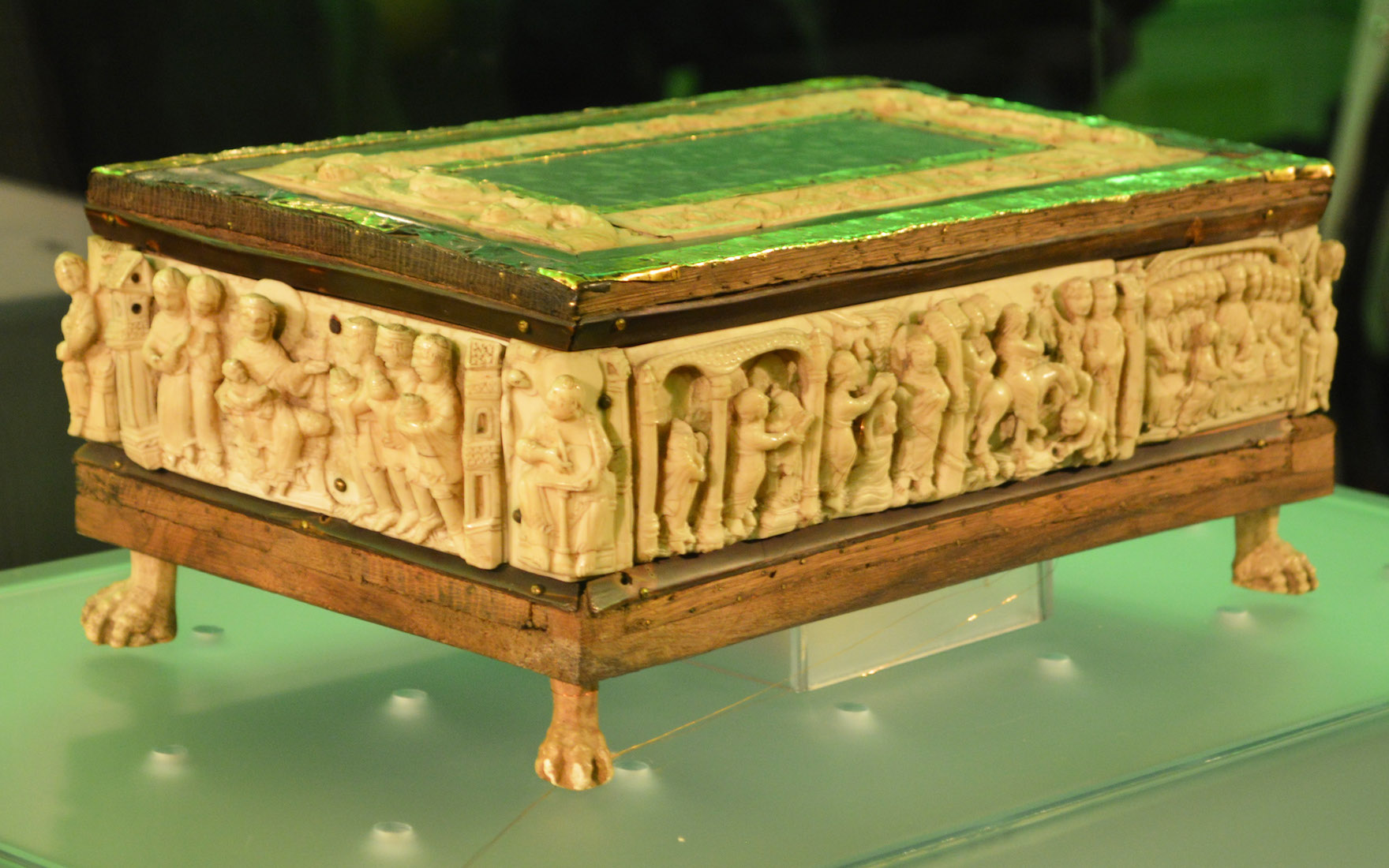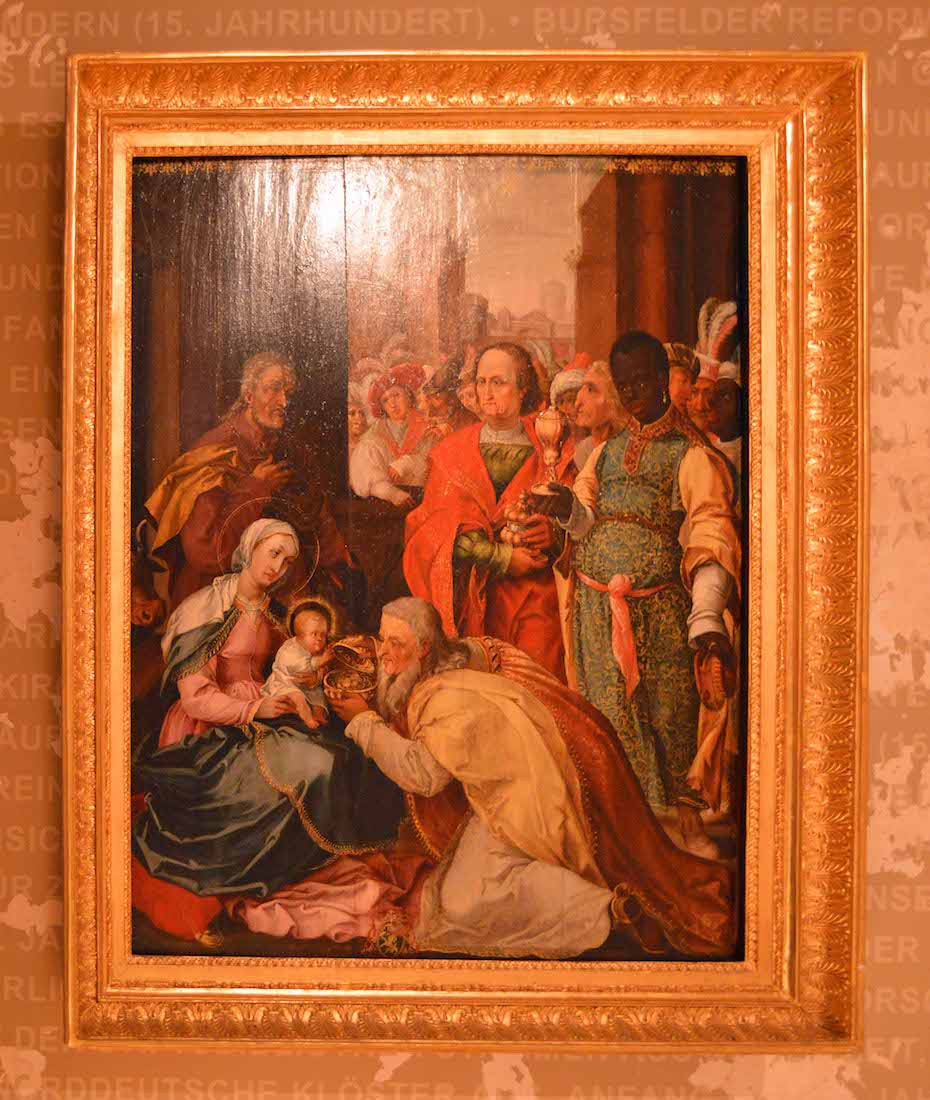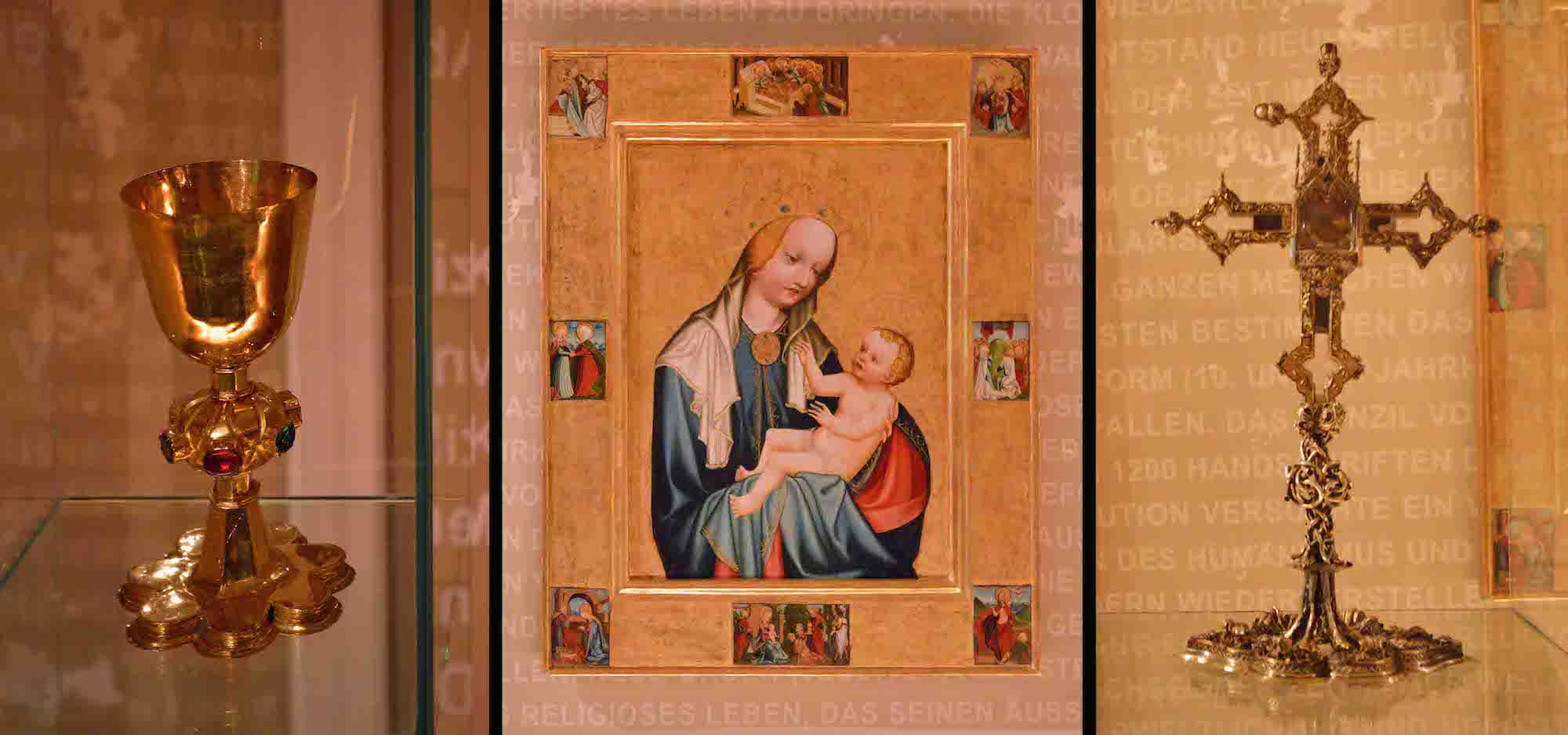2. SATELLITE VIEW
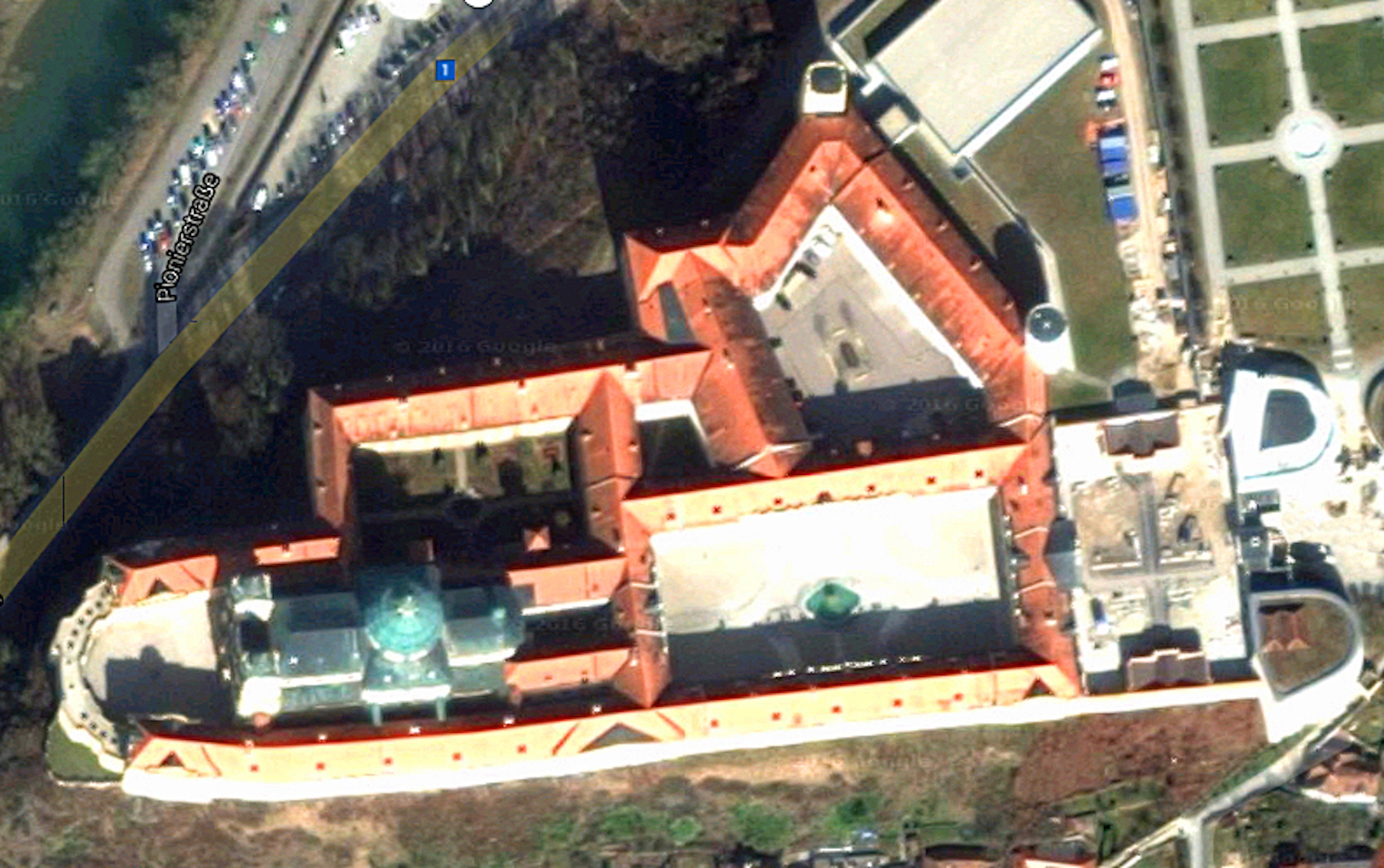
The Abbey is a vast complex, much of it inaccessible to tourists. There is a steep path up from the village of Melk, but we begin our tour from the carpark at the eastern end (at right). A garden, an entryway, a large rectangular courtyard, an extensive museum along bottom left, around the circular terrace at left, and finishing at the central church. This is one impressive abbey!
3. THE APPROACH
Unfortunately the weather is inclement on the day of our visit, but this does little to spoil our enjoyment. We follow the crowd, and approach the outer gate.
4. OUTER COURTYARD
The outer gate leads to an enclosed courtyard – the Gatekeeper’s Courtyard – where people gather before beginning their tour. Here we find information, a ticket office, toilets and a waiting area. Directly ahead is a more spectacular entrance – the Eastern Façade. Two tapered columns, and above, a large Melk Cross with Latin inscription: ‘Glory is only to be found in the cross’ (Gal 6:14).
5. FAÇADE DETAIL
Immediately above the entrance is a small balcony from which the abbot used to greet guests. Beneath this is the abbot’s coat of arms: two golden keys crossed on a blue background. On either side are sculptures of the apostles Peter and Paul, patron saints of the Abbey Church.
6. BENEDICT HALL
Passing through the entrance we come to the two-storey Benedict Hall. The ceiling fresco shows St Benedict and a mountain with a Roman Temple and a cross. In 529 Benedict of Nursia built his monastery on the site of the Apollo Temple on Monte Cassino.
7. THE PRELATE’S COURTYARD
The Prelate’s courtyard is 84 m long and 42 m wide. It actually forms a trapezoid: the side opposite the Benedict Hall is narrower, creating an illusion of greater depth. The design of the façade is simple, but its very simplicity gives the courtyard a quiet grandeur. Ahead of us is the dome of the Abbey Church.
8. AROUND THE COURTYARD
Statues of apostles and prophets line the cornices on each of the four sides. In the centre of each cornice is an area framed by a round arch. The original frescoes weathered over time and have been replaced by paintings showing Prudence, Temperance, Justice and Fortitude.
9. IMPERIAL STAIRCASE
We pass through the archway in the southwest corner of the courtyard, and climb the Imperial Staircase. On the first landing is a group of white stucco sculptures and a plaque with the motto of Emperor Karl VI: ‘Constantia et Fortitudine’ (with Perseverance and Courage).
10. IMPERIAL CORRIDOR
On the second floor, the staircase opens onto the Imperial Corridor which extends for 196 m. On the walls are paintings of Austria’s rulers up to the last, Emperor Karl I.
11. AUSTRIAN RULERS
Two of the paintings depict Maria Theresa, and Franz I Stephans. Maria Theresa Walburga Amalia Christina 1717 – 1780, was the only female ruler of the Habsburg dominions and the last of the House of Habsburg. Her husband Franz I Stephans was Holy Roman Emperor.
12. MUSEUM: ROOM 1
We move to the first of eleven connecting rooms of the museum – the Blue Room! In 529 St Benedict wrote a Book of Rules which made praying, working and learning the basis of life in a community. This manuscript is the oldest copy of the Rule in the monastery. It was written by the beginning of the 12th century.
13. ST BENEDICT
The baroque statue depicts St Benedict. It shows the young Benedict as an abbot with the pastoral staff and pectoral cross. His teaching can be summed up as ‘Listen with your heart’ – a habit he cultivated while living in the mountains of Subiaco as a hermit.
14. THE MELK CROSS
We leave the various exhibits of the Blue Room and proceed to Room 2. Here we find the elaborately decorated Melk Cross dating from 1362. The Cross has a colourful history, having been stolen several times.
15. ROOM 2 – THE GREEN ROOM
Room 2 is bathed in a dark shade of green, and is subtitled ‘A House for God and Man’. These two paintings show ‘The Visitation’ when Mary went to visit her cousin Elizabeth after being spoken to by the angel, and ‘St Benedict with the Poisoned Chalice’. The story is that some monks tried to poison Benedict, not liking his strictness. When Benedict blessed the poisoned chalice, it shattered.
16. IVORY CASE
This Spanish ivory case dating from the 13th – 14th centuries is thought to have come from an Hispano-Moorish workshop. Arabian inscriptions lead us to believe that the case came from an area under Arabian influence.
17. ALTAR OF MARGRAVINE SWANHILDE
This portable altar belonging to Margravine Swanhilde dates from the 11th century. This very important work from an art historical point of view, was also a Babenberg family possession.
18. OLD CHESTS, RELIQUARY
The reliquary in the shape of a head is thought to have contained the remains of a female saint. The braids which can be seen on the back of the head and the circlets show that this was not just any woman but a noblewoman. The reliquary probably contains the top of the skull of St Agnes of Bohemia (1205 – 1282).
19. ROOM 3, NATIVITY PAINTING
We move on to Room 3, subtitled, ‘The Ups and Downs of History’. This charming painting shows the magi bringing their gifts to the young child Jesus. Surely one of the ‘ups’ of history!
20. CHALICE, MADONNA, CROSS
Pictured here are three items from Room 3. At left is a gold chalice. At centre we see a painting of the Madonna and Child, surrounded by small scenes relating to the life of Christ. At right is an unusual relic cross, with a small container at the intersection holding a relic of some saint.


